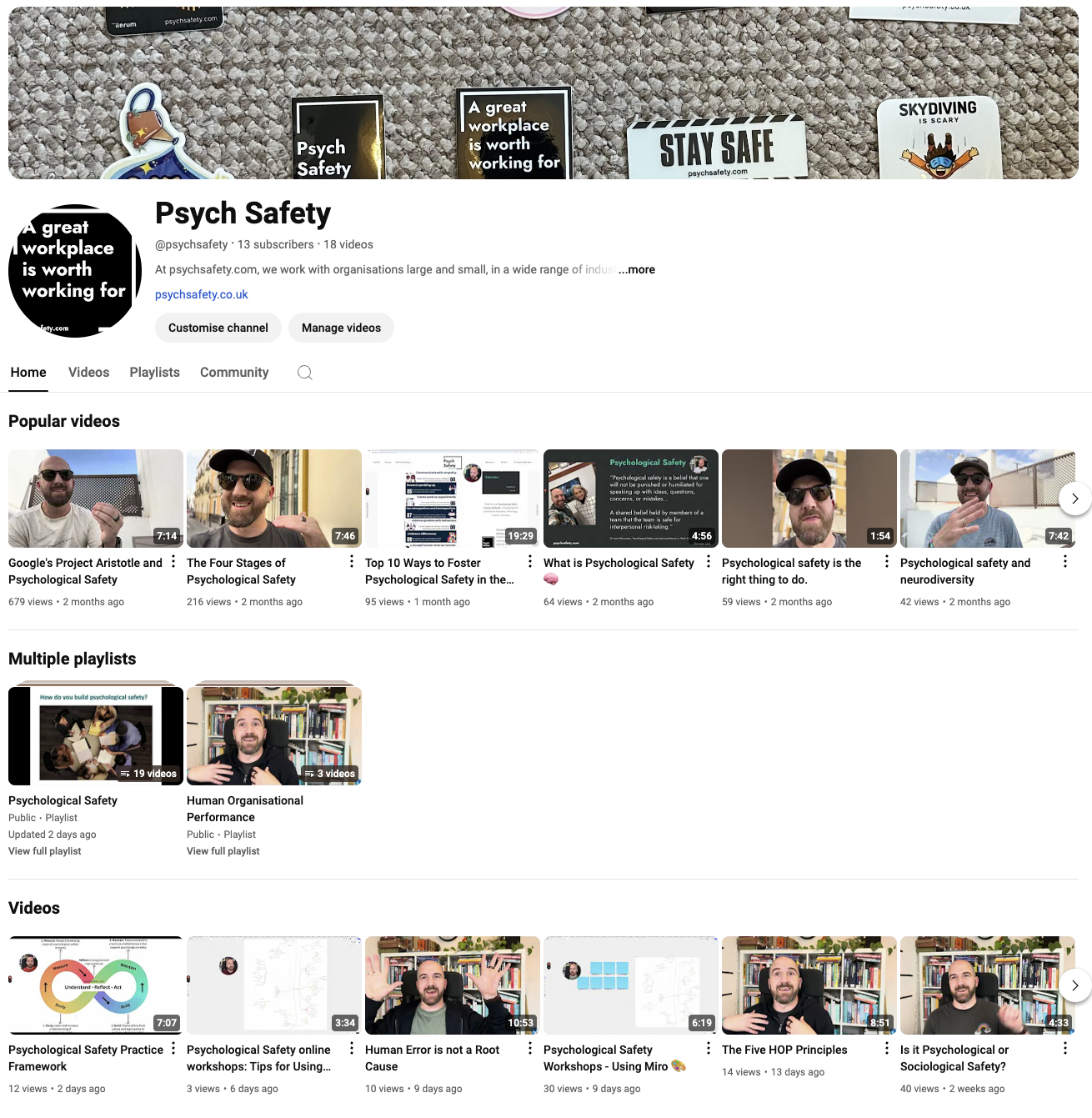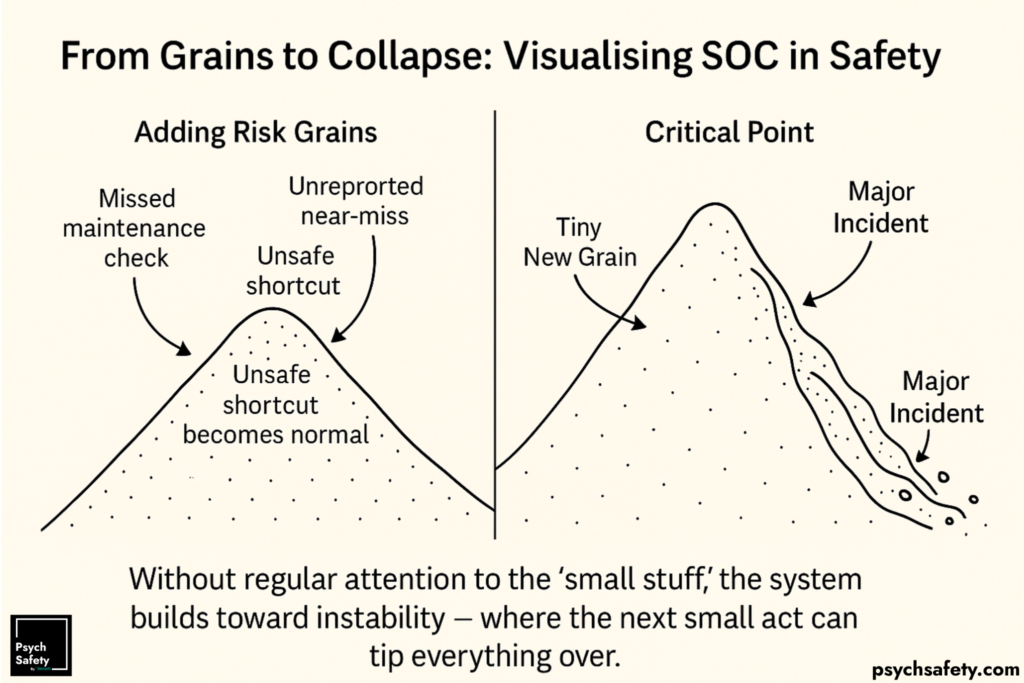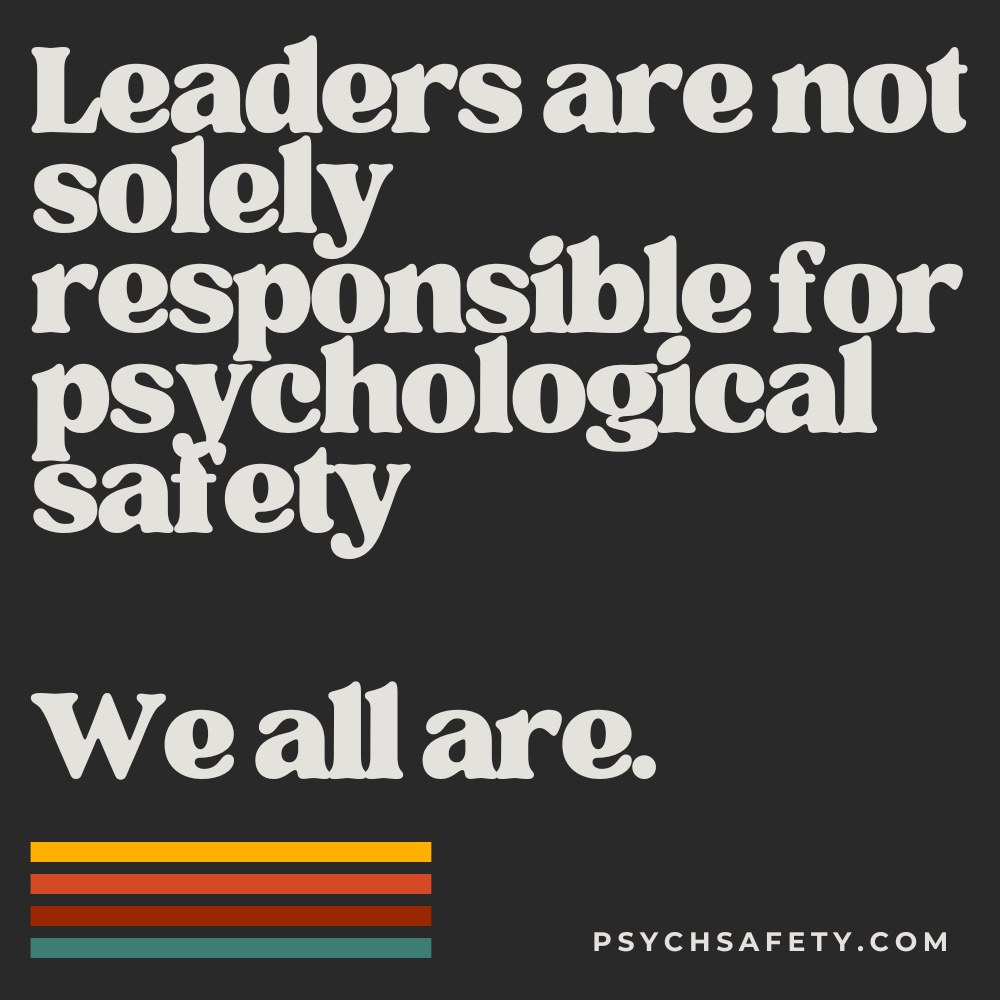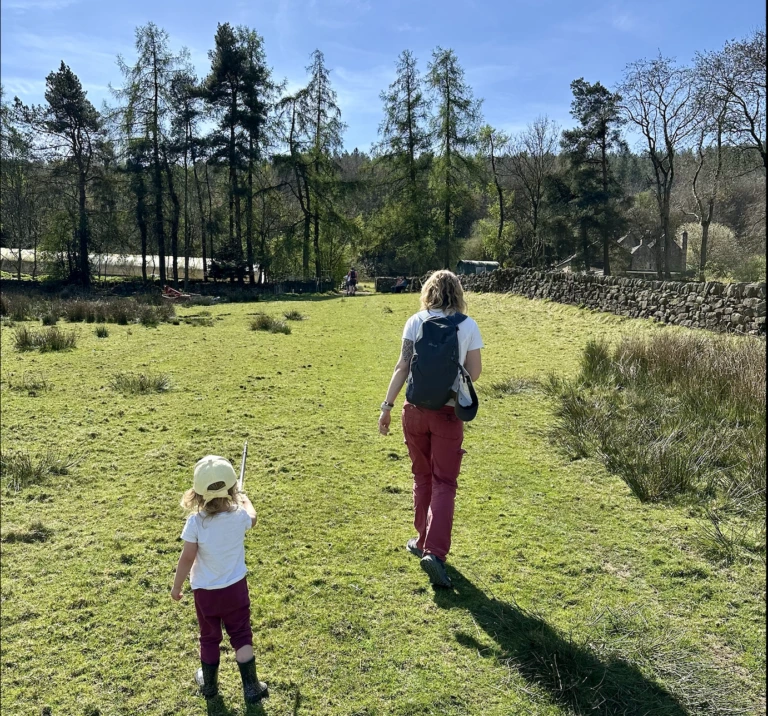We’ve been rather busy this week, in the midst of this round of psychological safety online workshops, including fundamentals, practices, leadership, measurement, advanced, and workshop design and facilitation. With that in mind, we thought it would be a good time to share our Psychological Safety Youtube Channel!
Currently at about 18 videos and growing, we dive into everything from a critique of The Four Stages model, to the core Principles of Human and Organisational Performance. You can check them all out on our channel page, subscribe, like, share and do all that other social media stuff, but below are some key highlights too:

We also have a videos page on Psych Safety listing many of these too.
Psychological Safety in Practice
Design Your Organization for the Conflicts You Want to Hear About
This is an excellent piece from Dave Kellogg with a framework for thinking about how to design your organisation so that you hear about the conflicts that you want to hear about. Not all of them, but the conflicts you want to hear about — presumably because you can add the most value in resolving them — and then design the organisation to make sure you do.
Speaking up About Fraud
External audits rarely bring fraud to light. In fact, most fraud (43%) in organisations is surfaced through employees, vendors and customers speaking up when they have concerns and suspicions. This 2024 report from the Association of Certified Fraud Examiners dives deeper into organisational financial fraud and how it’s discovered. Thanks to Jen Stine for the tipoff.
Measurement and Management
In our workshops on psychological safety, we get deep into the rationale and dangers of quantitative measurement of psychological safety, and we find people have often encountered the mis-quoting of W E Deming, as “You can’t manage what you can’t measure”, when in fact Deming said, in his book The New Economics:
“It is wrong to suppose that if you can’t measure it, you can’t manage it – a costly myth.”
Sometimes, the quote above is attributed to Peter Drucker, which is again antithetical to Drucker’s actual view, which is that:
“What gets measured gets managed — even when it’s pointless to measure and manage it, and even if it harms the purpose of the organisation to do so.”
Metrics can disguise the truth, hide outliers, and create a false sense of comfort and security. A focus on, and absolute faith in, numbers can mask the underlying truth such as misalignment, inefficiencies, dysfunction and incubating disasters. Just because something is being measured doesn’t mean it’s being managed effectively, or at all. Especially if the numbers don’t actually represent the thing that we think they do.
The most important insights often lie in what the numbers don’t show.
Does Software Need Safety?
Colette Alexander and Clint Byrum are joined by John Allspaw, the pioneer of Resilience Engineering in the software world, in the second episode of the excellent This Is Fine Podcast. John highlights how the idea that incidents are caused by changes are like gum in a toddler’s hair, and is just so hard to get rid of!
This week’s poem:
And the men?! By Hollie McNish
and the men!? and the men!?
with rubble buried beneath fingernails
searching and screaming and searching
the headlines repeat women and children
women and children women and children
what age does a boy have to become
before he’s not part of the sadness –
fourteen? fifteen? seventeen? twenty?
hierachies of innocence and sympathy
spitting him out when his stubble shows through,
and yes i know perpetrators most often
are male but not all shouldn’t we stop
separating the grief it is all devastation
women murdered beside brothers and fathers
and grandads and friends who once grew
as children before them, boys beside them,
hearts beating equally hopeful for futures
before the blossom is bombed
From @holliepoetry on Instagram
The post Psychological Safety Videos, Fraud, Safety in Software, Conflict in Organisations and more! appeared first on Psych Safety.





